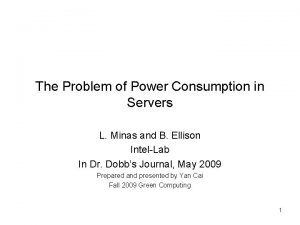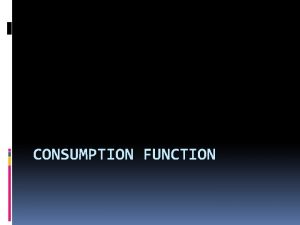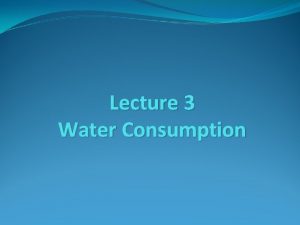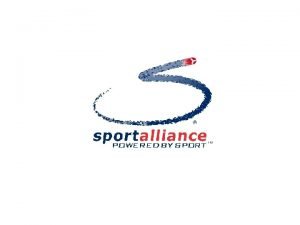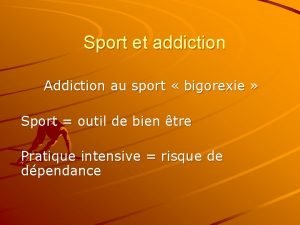COMPUTATIONAL RESOURCE CONSUMPTION WITH SPORT Assessment of Computational







- Slides: 7

COMPUTATIONAL RESOURCE CONSUMPTION WITH SPORT Assessment of Computational Resource usage within the SPo. RT program October 2007

� Current Activities in this assessment are only those deemed to be computationally “expensive” � The definition of expensive is generally tasks that are multiprocessor tasks and run for a notable amount of time (generally greater than an hour) Task User location platform AIRS Radiance DA Cycle AIRS Radiance Fcst Cycle AIRS Radiance Assimilation Study NSSL 4 km WRF Fcst Mc. Carty NOAA/NCEP/EMC IBM Haze Dembek NOAA/NSSL SGI Altix 4700 SPo. RT LC 2 GSFC NCCS Discover AIRS Profile Assimilation Chou/Zavodsky WRF/LIS study Case 1 Notes DA+Fcst Single Processor ADAS 1 Since ADAS is single processor, only fcst is included in this discussion

Quantifying Current Activities � Basic measures needed to determine a quantified comparison of computational resource consumption � the number of processors � the time per individual task � the number of experiments � � The product of these measures gives a measure of the computational hours necessary for each “step” within the experimental design Processor efficiency is not considered

Quantifying Current Activities Task n. proc type AIRS Radiance DA Cycle AIRS Radiance Fcst Cycle NSSL 4 km WRF Fcst 48 48 61 AIRS Profile Assimilation 30 WRF/LIS study 100 IBM Power 5 Intel Itanium 9000 Intel Xeon CPU 3. 20 GHz task time (hr) Computing experiments Hours per step 1 3 7. 5 2 2 1 96 288 457. 5 2 150 1. 2 1 120

Quantifying Current Activities � � The previous chart shows the amount of resources per experimental step However, each study has more steps per case day � For example, the AIRS profile study runs once a case day � The NSSL forecasts are initialized once a day � The AIRS Radiance study performs 8 assimilation cycles and 4 forecasts a day � Thus, computational hours per case day are considered by taking the product of the steps per day and the computational hours per step

Quantifying Current Activities Task AIRS Radiance DA Cycle AIRS Radiance Fcst Cycle AIRS Radiance Assimilation Study NSSL 4 km WRF Fcst AIRS Profile Assimilation WRF/LIS study 1 Computing Hours (n. ex Steps per case * n. proc * task time) day per step 96 288 8 4 computing hours per case day 768 1152 19201 457. 5 150 120 1 1 1 457. 5 150 120 The Radiance Assimilation study is the total of the DA cycle and the spawned forecasts

Disk Space Requirement Estimation Task Disk Space experiments Disk Steps Disk Space Usage (GB) Space per case per Per step day (GB) experiment AIRS Radiance DA Cycle AIRS Radiance Fcst Cycle AIRS Radiance Assimilation Study NSSL 4 km WRF Fcst AIRS Profile Assimilation WRF/LIS study 1 DA+FCST 6. 6 2 13. 2 8 105. 6 63 2 126 4 504 609. 61 60 60 1 11. 3 2 22. 6 1 2 “Total” 22. 6 5002



